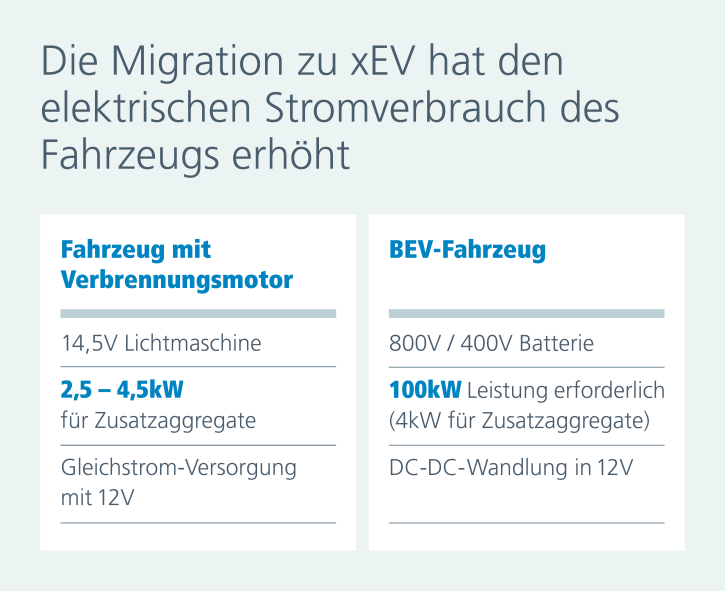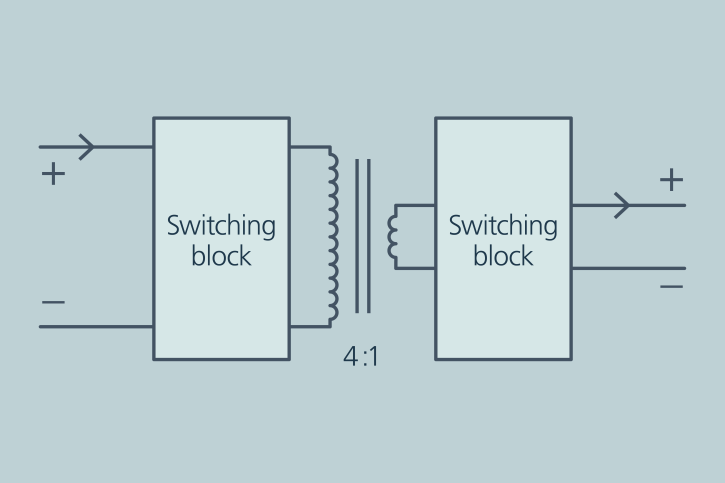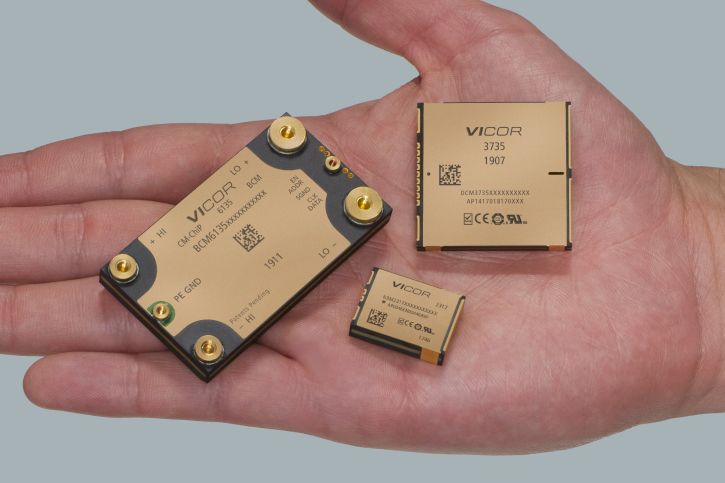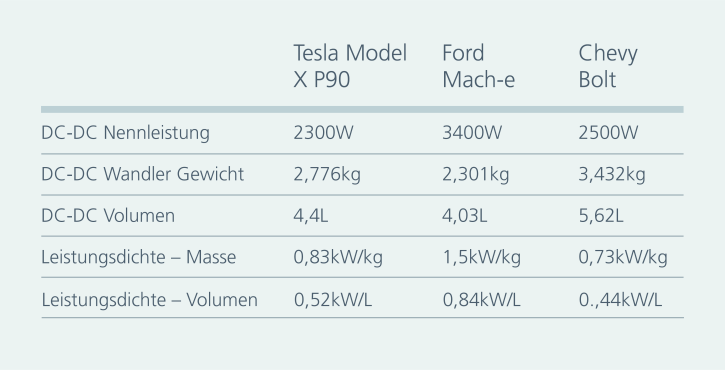For all vehicles, regardless of whether they are combustion engines or electric vehicles, the challenge is to reduce vehicle weight and optimize vehicle size. The use of SAC-based technology in DC/DC power conversion opens the way here.
Power modules are flexible enough to develop charging, switching and bridging architectures. (Photo: Vikor)
The development of vehicle electrification is leading to changes in the electrical architecture of today’s vehicles. On the one hand, the energy required to operate a vehicle is increasing, but on the other hand, it affects the way developers use energy for various activities. Providing systems in the car. Engineers around the world are working hard to solve the problem of limited range and too few charging stations. Economically, there is a lot at stake. This may be the most important challenge engineers have ever faced.
E-Mobility: Range

(Image: Adobe Stock 204728350, Hüthig)
How can the range of an electric car be increased? Higher efficiency through suitable semiconductors, lower weight through lightweight construction and intelligent driving, ensure greater range. You can find out what the technologies are behind it here.
Powertrains are used in battery electric vehicles (BEV) and plug-in hybrid vehicles (PHEV), for example. B. High voltage batteries (800V or 400V), which must also supply additional 48V and 12V units. The DC/DC converters required to step down these loads are usually large and heavy. However, this can be mitigated by using converters based on the sine amplitude conversion (SAC) power topology. SAC has key advantages that cannot be achieved using traditional power supply concepts, as it allows developers to reduce the weight of DC/DC converters by up to 50 percent and the chassis size by up to 60 percent.
Challenges with BEVs
Vehicle electrification replaces electricity generated on board the vehicle with electricity coming from the power grid, which is stored in high-voltage batteries. In addition to this change, many control systems and subsystems were converted, such as: B. Electric steering and suspension, advanced driver assistance systems and infotainment systems present new challenges for power system developers. The energy requirements of electric vehicles have increased 20 times compared to internal combustion engines (ICE). Today’s battery electric vehicles require 100 kilowatts or more, with at least 4 kilowatts of the total requirement coming from additional modules. In comparison, the total power requirement of an ICE ranges from 2.5 to 4.5 kW. This massive increase represents a major hurdle for engineers.

The other big change for developers is that power no longer comes from a continuously running 12-volt alternator that generates power from the combustion engine. Instead, they come from a limited supply of 400V or 800V power stored in the battery. Since many accessories are designed with 12V in order to optimize costs and performance, there should still be a 12V power source in the vehicle. Therefore, it is necessary to create an architecture to convert the high-voltage battery supply to 48V or 12V to supply the various subsystems of the vehicle. Ideally, the energy density of such a system is maximized in order to reduce the weight and volume of the building.
SAC topology
The key to building DC/DC converters with high power density is to use a SAC topology. The basis of SAC operation is the concept of zero-voltage or zero-current switching, which enables voltage conversion with a fixed conversion ratio.

SiC: technology, efficiency and miniaturization
To make the transformer as small as possible, switching occurs at frequencies above 1300 Hz; This allows the use of smaller magnets and shorter path lengths for the coils. One side effect of SAC is its transient response of over 8.6 mA/s.
SAC DC/DC converters have been used in high-performance computing for decades and provide power densities in excess of 15 kW/kg and 85 kW/L. The same technology is now also indispensable for automobile electrification.

Mini power grid
The use of SAC-based components can reduce the size of power grids and allow developers to optimize the power grid in various ways. The battery voltage can be easily converted to 48V and at point load From 48V to 12V network. Conversion from the primary battery voltage (400/800 V) to 48 V can be achieved, for example, using Vicor’s high-voltage BCM bus converter. With a mass of 58 g and a volume of 0.016 litres, the BCM delivers an output of 2.5 kW at 48 V. The ZVS-PRM regulator with a mass of 40 g and a volume of 0.01 l regulates a power of 48 V.
The regulated voltage is converted from 48V to 12V using a DCM DC/DC regulator; A 2 kW unit for this purpose weighs 29 g and has a volume of 0.01 litres. Using the SAC topology, systems can deliver 2 kilowatts of regulated 12-volt power with 136 g of converter components, reducing system weight by up to 65 percent and saving up to 50 percent of the space of a DC/DC converter.
Table 2 shows how this weight and space savings can be achieved in the application. The example looks at 400V to 12V DC/DC converters in three existing BEVs.

Improve energy density
However, the power density of this system is very low due to the use of standard designs based on the best discrete component combinations available. This can be greatly improved by using SAC topology and power modules.
To provide 4 kW of regulated 12V power from a 400V battery supply, the system must use a BCM for galvanic isolation, 48V injection, and a DCM to convert to 12V power. A combination of two BCM6135 components and two DCM3735 components can provide the required power of 4 kilowatts. This chip weighs just 266g, saves 15kW/kg and occupies just 0.046 litres, saving 87kW/L. To provide full functionality in the vehicle, some additional circuits are required, including high-voltage connectors, low-voltage connectors, Heat sinks, housings, circuit boards with additional circuits (reverse polarity, pre-charging, EMI filter) as well as an isolator and connector for CAN communications.
Including additional system components, a 4 kW DC/DC converter weighs 1.4 kg, which corresponds to a power density of 2.5 kW/kg; It has a volume of just 0.76 litres, resulting in an energy density of 5.22 kWh/litre.
The resulting system has six times the power density and is 58 percent smaller than the best volumetric current density DCDFDC converter from other suppliers. Statistically speaking, for every kilogram of mass saved, the vehicle’s range increases by 0.8 km. This system not only leaves more space for other components, but also provides a 1.0 km greater range. Additionally, the miniature system weighs half as much as the Mach-E system in a Ford Mustang and has 1.7 times greater power density. (Bachelor’s)
Would you like to read more?

“Certified tv guru. Reader. Professional writer. Avid introvert. Extreme pop culture buff.”






More Stories
Oh: Canadian company Pattison relies on Broadsign
Club competition: Sport shooters rely on laser technology
Latest technology for community safety – Celler Presse